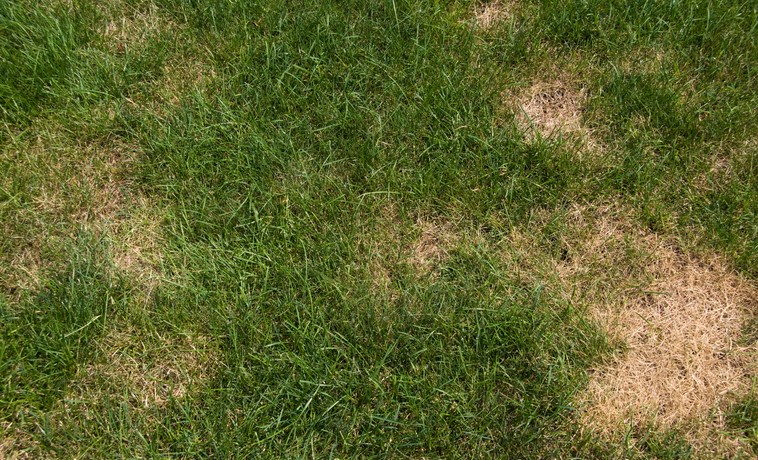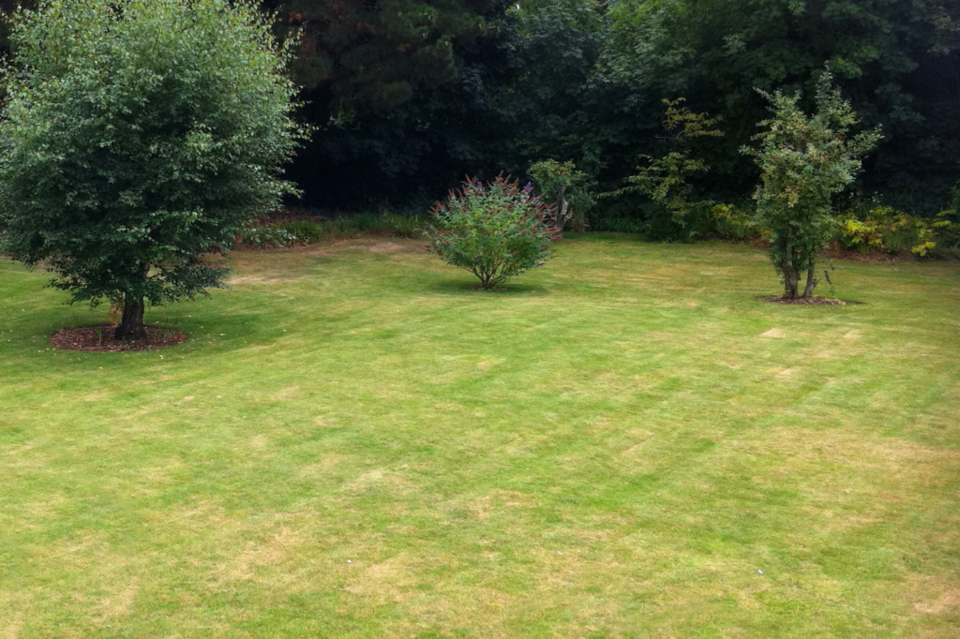Everyone wants a lush green lawn for summer barbecues and for children and their four-legged friends to play on. So what do you do when your yard starts looking brown or patchy?
Start by identifying the underlying issue behind the dead spots in your grass, and then the repair is pretty straightforward. These lawn care tips will help you recover dead spots and leave your yard looking fresh and vibrant.
What causes dead spots?
Regardless of what causes them, dead spots in the lawn can be an eyesore and a frustration. But these dead spots crop up for a number of reasons, and determining the root cause of the issue is the first step to resolving it.
So what all can cause clumps of grass to die off in your yard?
-
Pests: Grubs can eat away the roots of your grass, leaving the tops to wither away and not be replaced by new grass.
-
Animal urine: Animals, particularly dogs, have high nitrogen concentrations in their urine, which is damaging and potentially fatal to grass.
-
Fungus: Another possible culprit for those patchy brown spots throughout the yard is a lawn fungus. Fungus may wreak havoc after a long rainy season or if the grass has been stressed by an excessively short mow or over-fertilizing.
-
Burns (salt or fertilizer): Excess of either salt or fertilizer, which contains nitrogen, can “burn” your grass. If you applied too much, it won’t be long before your grass starts to die off in little rings around where you fertilized.
-
Lack of water: If your sprinkler system isn’t quite providing full coverage, it can cause the un-watered areas to brown and eventually die.
-
Thatch: When patches of your yard are allowed to collect a buildup of old grass, leaves, or other natural matter, it turns into “thatch” that can block water from getting to the roots of your lawn.

Is the grass dead or dormant?
If your brown patches are merely dormant due to excessive heat or low water, you’ll want to take steps to revive it rather than repair or reseed. But how can you tell?
Easy. Grab a clump of grass in one of your brown spots and tug. If the grass resists your pull, it’s dormant. If it pulls right up, it’s dead, and you’ll need to take steps to repair those patches.
Will the grass grow back in?
The short answer is: That depends. Grasses like Kentucky bluegrass and Bermuda grass may be able to creep back into the dead spots if the soil is not contaminated. However, there is no guarantee this will happen, and you can speed the process with a few simple steps to repair the dead spots.
Photo: Warchi via gettyimages.com
Simple Steps to Repair Dead Spots in Your Yard
- Dethatch using a rake and remove any weeds from those spots.
- Loosen or prepare the soil. Rake the soil so the new seeds will have space to take root. If it’s a spot that’s been burned with fertilizer or urine, you may want to turn the soil so that the seeds have access to fresh, nutrient-rich soil.
- Reseed. This is best done in late summer or early fall. Sprinkle the grass seed lightly over the area. You can also cover the new seeds with a fine layer of soil to help hold them in place.
- Water. Use a gentle spray of water so you don’t wash the seeds away, then keep the area moist with consistent watering for around two weeks to allow the seeds to take root.
- Let it grow. Keep foot traffic, pets, and children away from the area while the new grass is taking hold. By next season, it will be ready to withstand all the summer activities you throw at it!
If your yard is suffering from brown, patchy, dead spots, you may be able to address the problem yourself with these tips. That said, if you’re unsure of the exact cause of your spots or don’t feel up to managing the repair, call in a professional.
Experienced lawn care experts can identify the issues underlying the dead spots in your grass and can help you revive or repair them with confidence.




